Psychological Factors
The Psychological Aspects of Substance Use Disorders and Addiction
Obviously, it is very dangerous and illegal to drive while under the influence of alcohol or drugs. But unfortunately, alcohol and drug use can cause physiological and psychological harm even for those who use the good judgment not to mix driving with alcohol and drug use. When the functioning of the body, to include the functioning of the brain, is affected in a negative way by the use of alcohol or drugs, a person has suffered physiological harm. When the ability to think, to reason, and to use the mind is affected in a negative way by the use of alcohol or drugs, a person has suffered psychological harm.
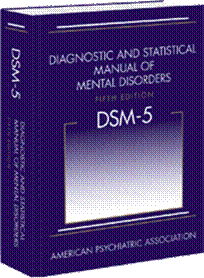 The American Psychiatric Association publishes the Diagnostic and Statistical Manual of Mental Disorders (DSM). According to the DSM-5, the use of alcohol and illicit drugs can lead to substance use disorders. A substance use disorder involves the inappropriate or excessive use of alcohol or an illicit drug, or the non-medical use of a prescription medication with the intent to get high. The criteria listed below are used to determine the severity of the substance use disorder. Severity of the disorder is based on the number of criteria identified. Two to three criteria indicate a mild disorder, four to five criteria indicate a moderate disorder, and six or more criteria indicate a severe disorder.
The American Psychiatric Association publishes the Diagnostic and Statistical Manual of Mental Disorders (DSM). According to the DSM-5, the use of alcohol and illicit drugs can lead to substance use disorders. A substance use disorder involves the inappropriate or excessive use of alcohol or an illicit drug, or the non-medical use of a prescription medication with the intent to get high. The criteria listed below are used to determine the severity of the substance use disorder. Severity of the disorder is based on the number of criteria identified. Two to three criteria indicate a mild disorder, four to five criteria indicate a moderate disorder, and six or more criteria indicate a severe disorder.
- Tolerance: Tolerance is defined as the need for increasing amounts of a substance to achieve the same intoxicating effect or experiencing significantly less effect when taking the same amount of a substance. The amount of tolerance that develops depends on the substance that is being taken. For example, people who use large amounts of stimulants and opioids can develop high degrees of tolerance. Eventually, it may take 10 times as much of the drug to generate the same effect. Significant, but lower, levels of tolerance can be developed for alcohol. (Note: Tolerance symptoms are not counted toward the diagnosis when the patient is involved in an appropriate medical treatment program for a problem such as pain, depression or anxiety unless they have other symptoms of aberrant behavior demonstrating compulsive drug-seeking.)
- Withdrawal: Withdrawal can be diagnosed if a person experiences either of the following:
 A person who has used large amounts of alcohol or illicit drugs over a long period of time may experience negative symptoms when the amount of substance in the blood or tissues declines. These negative symptoms can result in cognitive and physiological problems. Cognitive problems may include impairment in perception, memory, and judgment. Physiological problems may include nausea or other problems affecting the functioning of the body. As with tolerance, the amount of withdrawal experienced varies with the substance being taken.
A person who has used large amounts of alcohol or illicit drugs over a long period of time may experience negative symptoms when the amount of substance in the blood or tissues declines. These negative symptoms can result in cognitive and physiological problems. Cognitive problems may include impairment in perception, memory, and judgment. Physiological problems may include nausea or other problems affecting the functioning of the body. As with tolerance, the amount of withdrawal experienced varies with the substance being taken.- Once a person experiences the negative consequences of withdrawal, he or she may resume drinking or taking drugs in an effort to alleviate the negative consequences experienced as the amount of alcohol or drugs in the body declines.
- Repeated impairment when expected to carry out responsibilities at work, school, or home; work absences or poor performance at work; school absences; suspensions or expulsions; neglect of children or duties in the home.
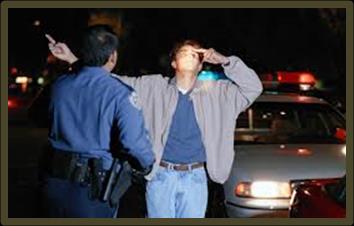 Repeated impairment when engaging in potentially dangerous physical activities like driving or operating dangerous machinery.
Repeated impairment when engaging in potentially dangerous physical activities like driving or operating dangerous machinery.
- Continued use of alcohol and drugs despite repeated negative social or interpersonal consequences: family problems, divorce, arguments, loss of friends.
- A person may take more of the substance than originally intended or take it for a longer time period.
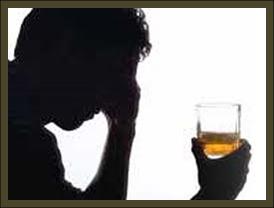 A person may express the desire to reduce drinking or drug use but is not successful in this endeavor. Often the individual may have repeatedly failed to reduce or stop drinking or using drugs.
A person may express the desire to reduce drinking or drug use but is not successful in this endeavor. Often the individual may have repeatedly failed to reduce or stop drinking or using drugs.
- A person may spend a great deal of time acquiring, using, or recovering from using alcohol or drugs.
- Virtually all daily activities revolve around drinking or drug use. Work, social, and recreational activities are reduced or eliminated due to substance use.
 The person continues to use alcohol or drugs despite realizing that this is causing psychological or physical problems. The person may withdraw from family activities or hobbies so he or she can drink or use drugs privately, or may start spending more time with those who use these substances.
The person continues to use alcohol or drugs despite realizing that this is causing psychological or physical problems. The person may withdraw from family activities or hobbies so he or she can drink or use drugs privately, or may start spending more time with those who use these substances.
- The person experiences intense drug craving.1
 The National Institute on Drug Abuse (NIDA) uses the word “addiction” to describe the compulsive and uncontrolled seeking of a substance. The craving is so intense that the person will continue drinking or taking drugs despite very negative consequences. The craving is so powerful that family or job problems associated with drinking or drug use will not deter the person from continuing with these activities. The craving can become so powerful that most of a person’s life can become consumed with the acquisition and consumption of alcohol or drugs. Every day in our country, addiction, the powerful compulsion to consume alcohol and drugs, is destroying the lives of those who are addicted and the lives of their family members and friends as well.2
The National Institute on Drug Abuse (NIDA) uses the word “addiction” to describe the compulsive and uncontrolled seeking of a substance. The craving is so intense that the person will continue drinking or taking drugs despite very negative consequences. The craving is so powerful that family or job problems associated with drinking or drug use will not deter the person from continuing with these activities. The craving can become so powerful that most of a person’s life can become consumed with the acquisition and consumption of alcohol or drugs. Every day in our country, addiction, the powerful compulsion to consume alcohol and drugs, is destroying the lives of those who are addicted and the lives of their family members and friends as well.2
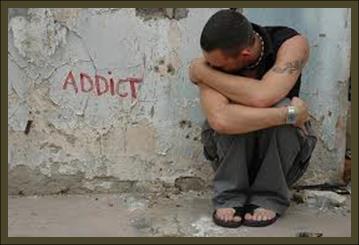 In a 2005 article titled “The Essence of Drug Addiction,” the Director of NIDA explained that when the subject of addiction is being discussed, the question often arises as to whether a substance is “physically” (or physiologically) addicting or “psychologically” addicting. The term “physical (or physiological) addiction” is used to describe whether a substance will result in significant physical withdrawal symptoms when drug use is stopped. The term “psychological addiction” is used to indicate “uncontrollable, compulsive drug seeking and use, even in the face of negative health and social consequences.” The Director of NIDA stressed that the “uncontrollable, compulsive craving, seeking, and use of drugs” is far more important than the negative physical effects associated with withdrawal. While, in many cases, medications are available to address the negative physical symptoms associated with withdrawal, it is the uncontrollable and compulsive craving, seeking, and use of drugs that destroys lives and families and that is so much more difficult to deal with.
In a 2005 article titled “The Essence of Drug Addiction,” the Director of NIDA explained that when the subject of addiction is being discussed, the question often arises as to whether a substance is “physically” (or physiologically) addicting or “psychologically” addicting. The term “physical (or physiological) addiction” is used to describe whether a substance will result in significant physical withdrawal symptoms when drug use is stopped. The term “psychological addiction” is used to indicate “uncontrollable, compulsive drug seeking and use, even in the face of negative health and social consequences.” The Director of NIDA stressed that the “uncontrollable, compulsive craving, seeking, and use of drugs” is far more important than the negative physical effects associated with withdrawal. While, in many cases, medications are available to address the negative physical symptoms associated with withdrawal, it is the uncontrollable and compulsive craving, seeking, and use of drugs that destroys lives and families and that is so much more difficult to deal with.
 The Director of NIDA emphasized that drug craving is an incredibly powerful force. Many of the crimes in our nation are committed to acquire drugs or the money to buy drugs. The most precious people in our lives are the members of our family—our children, spouses, and parents. But the addict will neglect or abandon those most precious to him/her if that is what it takes to acquire alcohol or drugs.3
The Director of NIDA emphasized that drug craving is an incredibly powerful force. Many of the crimes in our nation are committed to acquire drugs or the money to buy drugs. The most precious people in our lives are the members of our family—our children, spouses, and parents. But the addict will neglect or abandon those most precious to him/her if that is what it takes to acquire alcohol or drugs.3
In examining the dangers posed by alcohol and drugs, we need to pay special attention to those substances that create addiction—that uncontrollable, compulsive craving, seeking, and use of drugs.
Cost of addictions, alienation of friends and family and loss of job.
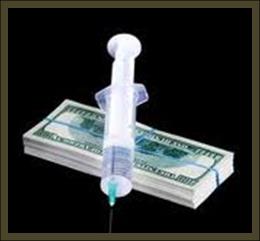 The uncontrollable, compulsive craving, seeking, and use of alcohol and drugs that is associated with addiction can destroy families, alienate friends and fellow employees, and lead to loss of employment which then creates even more problems for the addicted person and his/her family. Addiction can lead to the following problems:
The uncontrollable, compulsive craving, seeking, and use of alcohol and drugs that is associated with addiction can destroy families, alienate friends and fellow employees, and lead to loss of employment which then creates even more problems for the addicted person and his/her family. Addiction can lead to the following problems:
- Loss of trust: Family, friends, and co-workers learn not to trust addicts because time after time the addicted person promises to reduce or stop drinking or drug use but does not keep the promise.
- Abuse of family members: When under the influence of alcohol and drugs, the addicted person can abuse or neglect his/her family members and tragically this includes children. The U.S. Department of Justice reports that about 40 percent of the victims of family violence report that the offender was under the influence of alcohol or drugs at the time the crime was committed.4
 Neglect of children: Raising children is a full-time job. When someone is using or recovering from the use of alcohol or drugs, children can be neglected and left unsupervised. Also, the user can make bad decisions regarding the care of children that could place them in danger.
Neglect of children: Raising children is a full-time job. When someone is using or recovering from the use of alcohol or drugs, children can be neglected and left unsupervised. Also, the user can make bad decisions regarding the care of children that could place them in danger.
- Diversion of funds from family: Money spent for alcohol and drugs cannot be spent on items needed for the family.
- Family and friends may enable addicted person: Because the family members are ashamed to talk about the addicted person’s problem with other family members or with their friends, or are fearful that the addicted person will lose his/her job, family members may enable the addicted person to continue with the abuse of alcohol or drugs. The spouse may try to make excuses for why the addicted family member missed a family function or why the hung-over dad missed his child’s ball game or graduation. The spouse may have to wake-up and help the addicted person get ready for work or may lie to the addicted person’s boss about why he/she needs to miss work.
- Loss of hope: Co-workers and friends eventually give up on the addict, and sometimes family members do as well after their hearts have been repeatedly broken. The spouses, parents, and children of addicts keep hoping and pleading and begging for their loved one to stop his/her addictive behavior, but the addict continues to let them down.
 Family and friends no longer focus of life: While an addicted person may love his family and friends, the focus of his/her life becomes using alcohol and drugs. Most of the addicted person’s time, energy, and thoughts are centered on acquiring the next drink or drug fix: How can I get money needed to buy the drug? Where can I get it? What excuse can I use for my whereabouts when I am seeking and then using the drug? Then the addicted person must find a time and place to use the drug, and this is very difficult if the addicted person is trying to hide his/her alcohol or drug use from family or friends. Finally, the addicted person must figure out how to recover from the use of alcohol or drug use. How can I keep my spouse, children, or boss from knowing that I have abused alcohol or drugs?
Family and friends no longer focus of life: While an addicted person may love his family and friends, the focus of his/her life becomes using alcohol and drugs. Most of the addicted person’s time, energy, and thoughts are centered on acquiring the next drink or drug fix: How can I get money needed to buy the drug? Where can I get it? What excuse can I use for my whereabouts when I am seeking and then using the drug? Then the addicted person must find a time and place to use the drug, and this is very difficult if the addicted person is trying to hide his/her alcohol or drug use from family or friends. Finally, the addicted person must figure out how to recover from the use of alcohol or drug use. How can I keep my spouse, children, or boss from knowing that I have abused alcohol or drugs?
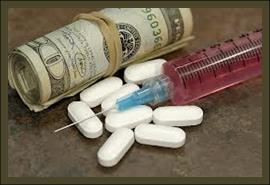 Isolation: Eventually the acquisition, consumption, and recovery from drug use take more and more time away from family and friends. Or maybe family and friends pull away because they don’t want to be asked for money they know will never be repaid. Ultimately, the addicted person may withdraw from family and friends so he/she can drink or use drugs without being judged by those who love and care about him/her.
Isolation: Eventually the acquisition, consumption, and recovery from drug use take more and more time away from family and friends. Or maybe family and friends pull away because they don’t want to be asked for money they know will never be repaid. Ultimately, the addicted person may withdraw from family and friends so he/she can drink or use drugs without being judged by those who love and care about him/her.
 Family breakup: Addiction can lead to divorce, loss of custody of children, and estrangement from family members. After years of broken promises, disappointment, and often physical and financial hardship, family members give up to start new lives free of the problems caused by living with the addict.
Family breakup: Addiction can lead to divorce, loss of custody of children, and estrangement from family members. After years of broken promises, disappointment, and often physical and financial hardship, family members give up to start new lives free of the problems caused by living with the addict.
- Hanging out with fellow alcohol/drug users: The addicted person may start spending more time with other alcohol and drug users, those who are not judgmental, those who can empathize with his/her need to use drugs, and those who can help him/her acquire drugs.1
Personal economic costs and legal problems
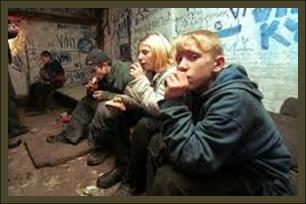 Alcohol and drugs are expensive. Funding a drug or alcohol problem can cause severe financial problems for the user and his/her family.
Alcohol and drugs are expensive. Funding a drug or alcohol problem can cause severe financial problems for the user and his/her family.
- Use of alcohol and drugs by those in school can reduce educational achievement and can lead to failure or dropping out of school. These problems can lead to a lifetime of reduced earnings.
- Financial consequences associated with alcohol and drug abuse include loss of productivity, loss of employment, loss of funds expended to pay for alcohol and drugs, and the expense of alcohol/drug treatment programs.

- Alcohol and drug abuse are associated with criminal activity. The Department of Justice reports that about half of convicted jail inmates were under the influence of alcohol or drugs at the time they committed their offence. Alcohol and drug use can lead to criminal activities associated with gaining the funds to acquire the alcohol and drugs. Of course, possessing illegal drugs is also a crime. Each year, law enforcement makes more arrests for drug abuse violations than arrests made for any other category of criminal activity. About one in eight arrests are for drug abuse violations.5,6
 Alcohol and drug use are associated with violent crimes to include crimes against intimates: spouses, ex-spouses, boy and girl friends, and children. Those who commit violent crimes do great harm to our society and they face severe criminal penalties as well.
Alcohol and drug use are associated with violent crimes to include crimes against intimates: spouses, ex-spouses, boy and girl friends, and children. Those who commit violent crimes do great harm to our society and they face severe criminal penalties as well.
- If arrested for drug possession or other criminal acts related to use of alcohol or drugs, the user will face arrest followed by an extended period of legal activity associated with the conviction process.
- Criminals, those convicted of a criminal act, face a multitude of sanctions to include probation, jail, prison, fines, community service, counseling, and drug treatment.
Loss of judgment, many people who are intoxicated don’t think they are impaired
 In an ideal world, good judgment would prevent someone from abusing alcohol and drugs. Ideally, a sober person, whose judgment is not impaired, would make the decision to avoid illegal drug use and underage drinking. Unfortunately, every day sober people use bad judgment regarding the use of alcohol and illegal drugs. Based on the fact that sober people can use bad judgment, it is safe to assume that once a person becomes impaired, his/her judgment is not going to improve.
In an ideal world, good judgment would prevent someone from abusing alcohol and drugs. Ideally, a sober person, whose judgment is not impaired, would make the decision to avoid illegal drug use and underage drinking. Unfortunately, every day sober people use bad judgment regarding the use of alcohol and illegal drugs. Based on the fact that sober people can use bad judgment, it is safe to assume that once a person becomes impaired, his/her judgment is not going to improve.
One of the first capabilities to be impaired by alcohol and drugs is judgment. Consequently, many times those who are impaired do not realize that they are impaired, they underestimate their level of impairment, or they do not admit to their impairment. Usually, our good judgment keeps us from placing ourselves or others in danger. Most people have a strong survival instinct and don’t want to harm themselves or others. However, once judgment is impaired, we feel more invincible; risk-taking behavior increases. For example, an impaired person may engage in risky sexual behavior, or the impaired person may attempt to drive.
The first drink a person consumes starts to impair judgment, and of course, smoking that first joint of marijuana or snorting a line of cocaine impairs judgment as well. With alcohol, some people believe the first drink or two does not impair their judgment or capabilities, but studies expose the error and danger in this type of thinking. With illegal drugs, users are quickly aware that they are being affected by the drug they are abusing, but once again can fail to recognize the dangers associated with loss of judgment.
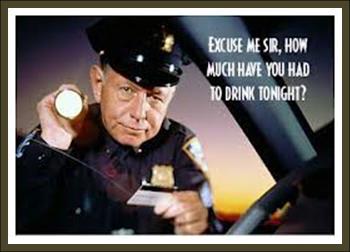 Once judgment is impaired and inhibitions are reduced, even more alcohol may be consumed or more drugs may be taken, leading to an overdose. Someone whose judgment is impaired by alcohol may decide to use illegal drugs for the first time, or someone who is high on drugs may decide to take a stronger dose or to try more addictive or dangerous drugs. And of course, too often, those who are impaired use bad judgment and drive.
Once judgment is impaired and inhibitions are reduced, even more alcohol may be consumed or more drugs may be taken, leading to an overdose. Someone whose judgment is impaired by alcohol may decide to use illegal drugs for the first time, or someone who is high on drugs may decide to take a stronger dose or to try more addictive or dangerous drugs. And of course, too often, those who are impaired use bad judgment and drive.
Alcohol is a gateway drug
What is a gateway drug? The American Heritage Dictionary defines a gateway as something that “serves as an entrance or a means of access” and offers the phrase “gateway to success” as an example. Unfortunately, gateway drugs are a gateway to failure. A gateway drug is a drug that serves as an entrance or opens the door to the use of other, often more dangerous, drugs. Gateway drugs are the gateway to the many drug-related problems we have addressed in this course.
 Alcohol and tobacco often serve as gateways to the use of illicit drugs by young people. According to the National Survey on Drug Use and Health, only 5% of young people who do not use alcohol use illicit drugs. In contrast, about 70% of young people ages 12-17, who are heavy drinkers, are also illicit drug users. This is about 14 times the rate of illicit drug use in those not also using alcohol. Also, about 45% of young people ages 12-17, who are binge drinkers, are also illicit drug users, about nine times the rate of illicit drug use in those not also using alcohol. Early alcohol use can lead to alcohol dependence and abuse problems later in life. Adults age 21 and older, who first used alcohol by age 14, are seven times more likely to suffer from alcohol dependence or abuse than those who had their first drink at age 21 or older.
Alcohol and tobacco often serve as gateways to the use of illicit drugs by young people. According to the National Survey on Drug Use and Health, only 5% of young people who do not use alcohol use illicit drugs. In contrast, about 70% of young people ages 12-17, who are heavy drinkers, are also illicit drug users. This is about 14 times the rate of illicit drug use in those not also using alcohol. Also, about 45% of young people ages 12-17, who are binge drinkers, are also illicit drug users, about nine times the rate of illicit drug use in those not also using alcohol. Early alcohol use can lead to alcohol dependence and abuse problems later in life. Adults age 21 and older, who first used alcohol by age 14, are seven times more likely to suffer from alcohol dependence or abuse than those who had their first drink at age 21 or older.
Over half of those in the 12-17 age group who used tobacco in the past month also used an illicit drug, while only about 6% of those who did not use tobacco in the past month used illicit drugs. A young tobacco user is nine times more likely to use illicit drugs than a young person who is not using tobacco.
For those youths ages 12-17, who reported using both alcohol and tobacco in the past month, the rate of illicit drug use is about 20 times higher than for those who reported not using alcohol or drugs. The rate of illicit drug use among those who report using both alcohol and tobacco in the past month is 70%, while only about 3% of those who did not use alcohol or tobacco in the past month reported using illicit drugs.7
Positive versus Negative Coping Skills. The choice to use alcohol in the first place. The compounding of problems with the use of alcohol and other drugs (depressed person using alcohol and other drugs as an escape mechanism, only making the problems worse.)
 There are positive and negative ways to deal with the problems we face in our lives. If you are having problems in school, a positive approach would be to talk to your teacher or counselor about the problem. Maybe you would decide to find a tutor or to spend more time studying. If you are having trouble acquiring or saving funds for school, positive approaches might include finding a job, closely monitoring your expenditures, and stopping compulsive spending. Positive approaches to problems with parents and family members might include family counseling or family meetings where family issues could be discussed. Unfortunately, instead of using positive approaches, some people facing problems use negative coping skills, including the use of alcohol and drugs. These negative approaches to coping often make the problems worse and create additional mental and physical problems as well.
There are positive and negative ways to deal with the problems we face in our lives. If you are having problems in school, a positive approach would be to talk to your teacher or counselor about the problem. Maybe you would decide to find a tutor or to spend more time studying. If you are having trouble acquiring or saving funds for school, positive approaches might include finding a job, closely monitoring your expenditures, and stopping compulsive spending. Positive approaches to problems with parents and family members might include family counseling or family meetings where family issues could be discussed. Unfortunately, instead of using positive approaches, some people facing problems use negative coping skills, including the use of alcohol and drugs. These negative approaches to coping often make the problems worse and create additional mental and physical problems as well.
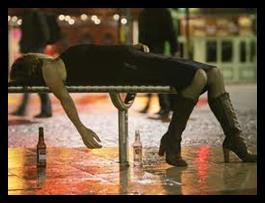 Alcohol and drugs may be used in an attempt to avoid, block out, or ignore their problems, even if only for a short time. The loss of a loved one, disagreements with parents or other family members, or social or educational problems in school can lead to the abuse of alcohol and drugs. If a person is feeling down or depressed by the problems in his/her life, alcohol, a depressant, is not going to fix the problem. While intoxication may bring short-term relief, once the effects of alcohol and drugs wear off, the problems still remain and may in fact be worse, thanks to the many negative consequences associated with the abuse of alcohol and drugs.
Alcohol and drugs may be used in an attempt to avoid, block out, or ignore their problems, even if only for a short time. The loss of a loved one, disagreements with parents or other family members, or social or educational problems in school can lead to the abuse of alcohol and drugs. If a person is feeling down or depressed by the problems in his/her life, alcohol, a depressant, is not going to fix the problem. While intoxication may bring short-term relief, once the effects of alcohol and drugs wear off, the problems still remain and may in fact be worse, thanks to the many negative consequences associated with the abuse of alcohol and drugs.
REVIEW QUESTIONS FOR SECTION 5
The Section Review Questions will help to prepare you for the Final Exam; incorrect answers will not count against you. You must complete the Section Review Questions before moving on to the next section of the course.
0
1. American Psychiatric Association (2013). Diagnostic and Statistical Manual of Mental Disorders (Fifth ed.). Arlington, VA: American Psychiatric Publishing.
2. National Institutes of Health, National Institute on Drug Abuse. The Neurobiology of Drug Addiction. Available at: http://www.drugabuse.gov/publications/teaching-packets/neurobiology-drug-addiction. Retrieved June 14, 2013.
3. Leshner A. The Essence of Drug Addiction. Available at: http://www.naabt.org/documents/The_Essence_Addiction.pdf. Retrieved June 13, 2013.
4. U.S. Department of Justice, Office of Justice Programs, Bureau of Justice Statistics. Family Violence Statistics. NCJ 207846. June 2005. Available at: http://bjs.gov/content/pub/pdf/fvs02.pdf. Retrieved June 14, 2013.
5. U.S. Department of Justice, Office of Justice Programs, Bureau of Justice Statistics. Drugs and Crime. Available at: http://www.bjs.gov/index.cfm?ty=tp&tid=35#pubs. Retrieved June 14, 2013.
6. U.S. Department of Justice, Federal Bureau of Investigation, Criminal Justice Information Services Division. Uniform Crime Reports: Crime in the U.S. 2011: Persons Arrested. Available at: http://www.fbi.gov/about-us/cjis/ucr/crime-in-the-u.s/2011/crime-in-the-u.s.-2011/persons-arrested. Retrieved June 14, 2013.
7. Substance Abuse and Mental Health Services Administration, Center for Behavioral Health Statistics and Quality. Results from the 2011 National Survey on Drug Use and Health: Summary of National Findings. September 2012. Available at: http://www.samhsa.gov/data/NSDUH/2k11Results/NSDUHresults2011.htm. Retrieved June 14, 2013.
